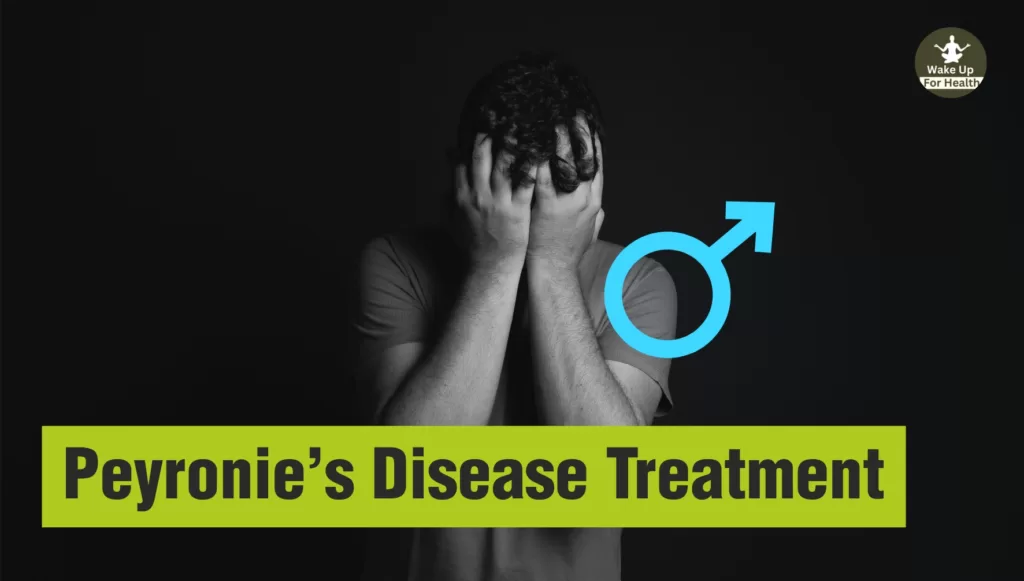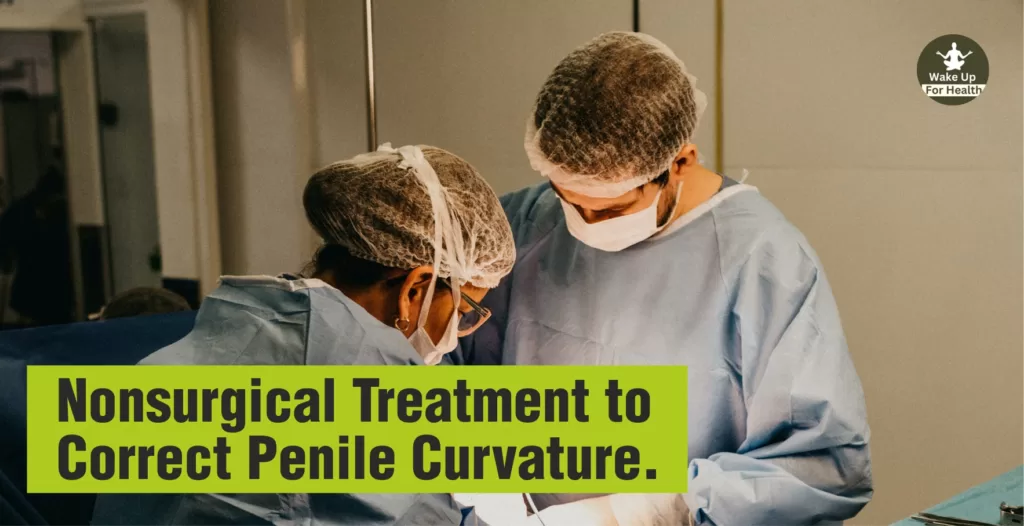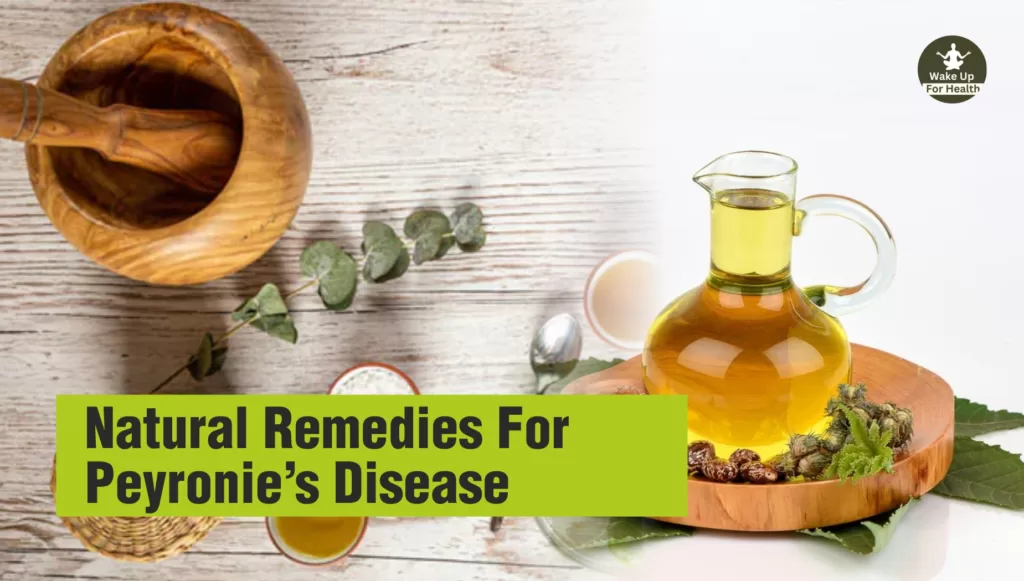Peyronie’s (Pay-Roe-NEEZ) disease is a noncancerous condition resulting from fibrous scar tissue that develops on the penis and causes curved, painful erections. Curvature of the Penis (Peyronie’s disease) is a form of sexual problems in men that can be troubling to any man. More than 1 million cases of curved penis occur every year. This problem can interfere with having sex as well as cause Peyronies Disease discomfort in achieving or maintaining an erection (erectile dysfunction).

Peyronie’s illness also contributes to mental tension and worry in many men. In today’s article, you will know what is Peyronie’s disease, what are its causes, symptoms and tests and what methods can be adopted for its treatment and prevention.
What is Curved Penis (Peyronies Disease)?
The condition of a curved penis is also known as Peyronie’s Disease. Peyronies disease is a rare form of erectile dysfunction (ED) that results in curvature of the penis, which can lead to painful erections. This problem affects most of the men in the age group of 45 to 60 years.
In the condition of a curved penis, fibrous scar tissue is formed inside the penis, which produces a curved shape or shape in the penis. This problem can be triggered by repeated minor injuries during sexual intercourse. Men who have Peyronies disease, and do not experience any difficulty in having sex, then this condition does not become a matter of concern for them.
Peyronie’s Disease Symptoms, Chronic Lyme Disease
The symptoms of a curved penis or Peyronie’s disease can develop suddenly or gradually. The most common signs and symptoms of Peyronies disease can include:
- The scar tissue or plaques associated with Peyronies disease can be felt under the skin of the penis as lumps or bands of hardened tissue.
- Appearance of penis curled up or down.
- In some cases, narrowing may be caused by the presence of a tight or narrow band around the shaft in the erect penis.
- Problems getting or maintaining an erection or developing erectile dysfunction
- Shortening of the penis.
- Pain in the penis with or without an erection.
- Scar tissue can vary in size and location from small to large.
- Feeling uncomfortable having sex.
- Curvature of the penis associated with Peyronies disease may gradually get worse. It usually remains constant in many situations.
Caused by a curved penis or Peyronies disease, pain during erection usually gets better without treatment within one to two years, but scar tissue and curvature of the penis often remain .
Causes For Peyronies Disease
In most cases, the exact cause of Peyronie’s Disease remains unknown. But research suggests that the condition of a curved penis can develop after injury or trauma to the penis. Injury can result in internal bleeding and scar tissue formation in the penis. Generally, injury to the penis can come due to the following reasons, such as-
- Injuries to the penis during sex.
- As a result of Athletic Activity or An accident.
- During the healing process, scar tissue builds up in a disorganized manner, which can be felt as a lump in Peyronies disease.
- Older men are more likely to develop curvature of the penis than adults.
- Genetics condition or certain health conditions can also cause bent penis or Peyronie’s disease.
Peyronies Disease, Symptoms and Causes, Preventive Measures
To diagnose the condition of penile curvature or Peyronies Disease, the doctor will ask the person about the symptoms and examine the penis in various ways to look for tender and firm areas of scar tissue. Typically, the following tests may be needed to diagnose a bent penis or Peyronies disease:
1. Physical Examination For Peyronies
With the help of physical examination, the doctor can determine the condition of penile curvature or Peyronie’s disease. Physical examination can measure the amount of scar tissue, the length of the penis, and the degree of curvature. Some doctors inject drugs into the man’s penis to induce an erection, so that the curvature or angle of the penis can be measured.
Apart from this, the doctor can also ask the concerned person to take a photo of his penis sitting at home. Therefore, with the help of physical examination, the doctor can observe the angle of curvature, location of scar tissue or other details and can also help in identifying the best treatment.
2. Other Tests For Peyronie’s
The doctor may order an ultrasound test or other tests to check the gender of the victim. Before the images of the penis are taken, an injection is given in the penis to make the penis erect.
Ultrasound is the most commonly used test to check for gender abnormalities. This test can show the presence of scar tissue, blood flow to the penis, and other abnormalities.
Treatment For Peyronie’s Disease
Peyronie’s disease can be treated, but in some cases it goes away without treatment. Depending on the severity of the symptoms of Peyronie’s disease, the doctor can adopt the appropriate treatment. The following may be a part of the healing process:
1. Medicines to Remove Deformity of the Penis or curvature of the Penis.
A variety of medications may be recommended to treat Peyronie’s disease (curved penis), but in some cases this is not an effective treatment. These drugs may need to be received for several months. Medications used to treat a bent penis or Peyronie’s disease may include the following:
- Collagenase clostridium histolyticum (Xiaflex) medication may be recommended to treat severe curvature in adult men.
- Verapamil is a drug commonly used to treat high blood pressure. It is effective for reducing the production of collagen, a protein that can play a role in the formation of scar tissue in the penis.
- Interferon is a type of protein, which blocks the production of fibroid tissue and also helps in breaking down the fibroid tissue. Hence Interferon can be used as a medicine.
Note-
Above given medication is just for your knowledge, we strongly not suggesting or promoting any medication. DO NOT TAKE any kind of medicine without Doctor’s advice.
2. Surgery to Correct Curvature of the Penis.
If the deformity of the penis or curved penis is more severe or the affected person is unable to have sex, then the doctor may recommend surgery to treat the curvature of the penis or Peyronie’s disease. Surgery is usually recommended for a person suffering from Peyronie’s Disease for at least a year. Surgery is chosen according to the location or severity of the disease.
Common surgical methods include:
- Suturing (plicating) unaffected side
- Incision or excision and grafting.
Penile implants – Penile implants surgically replace the spongy tissue that fills with blood during an erection. Penis transplant is mainly recommended for men suffering from Peyronie’s disease and erectile dysfunction.
Nonsurgical Treatment to Correct Penile Curvature.

Iontophoresis is a nonsurgical technique that uses a weak electric current to deliver medication through the skin. Iontophoresis is a good option to treat Peyronie’s disease.
Other nonsurgical treatments include using intense sound waves to break up scar tissue (Shock wave therapy), Penile Traction therapy, and Radiation Therapy. may be included.
Risk Factors For Peyronie’s Disease
Minor injury to the penis does not always cause Peyronie’s Disease. The development of scar tissue in the penis can be caused by a variety of circumstances. Risk factors for a curved penis can include the following:
1. Heredity
If any member of the family has the problem of curvature of the penis, then other men in that family are also more at risk of this problem.
2. Connective Tissue Disorders
Men who suffer from connective tissue disorders have a higher risk of Peyronie’s disease.
3. Age
The risk of Peyronie’s disease increases with the age of the person. The risk is larger for men over 55.
4. Other Factors
Certain health conditions, including smoking and some prostate surgeries, can contribute to Peyronie’s disease.
Complications For Peyronie’s Disease (Curved Penis)
Complications of Peyronie’s Disease can include:
- A state of tension in the relationship between sexual partners.
- Inability to have intercourse or sex.
- Anxiety or stress related to sexual abilities.
- Difficulty achieving or maintaining an erection ie erectile dysfunction.
- Difficulty in having children, etc.
Prevention For Peyronie’s Disease
Lifestyle changes can help reduce the risk of Peyronie’s Disease as well as erectile dysfunction (ED). To avoid the problem of curvature of the penis, the following measures can be adopted:
- Don’t Smoke.
- Minimize Consumption of Alcohol.
- Prohibit the use of illegal drugs.
- Exercise Regularly.
- Middle-aged men avoid vigorous or frequent intercourse.
- Protect the Penis from injury during activity, etc.
Diet For Peyronie’s Disease
In case of Peyronie’s disease or curvature of the penis, consuming a proper nutritional diet can help in reducing the symptoms. In the case of Peyronie’s disease, the consumption of the following diet is beneficial, such as:
- Milk, Meat and Fish
- Pineapple
- Red Beat and Dairy products
- Tuna, Whole Grains
- Consume more Vitamin E, etc.
Natural Remedies For Peyronie’s Disease

Natural treatments for penile curvature or Peyronie’s Disease are not well-studied, yet some natural remedies may help reduce symptoms associated with penile curvature. Natural treatments for curvature of the penis or Peyronie’s Disease may include the following:
1. Castor Oil
In case of penile curvature, applying castor oil on the penis, especially on the scar tissue and plaque, helps in softening or liquefying the hardened tissues. This remedy should be followed for about 12 weeks to get effective treatment. To get the best results, massage a small amount of oil on the penis every night at bedtime and then tie a cotton bandage over it.
2. Acetyl-L-carnitine
Acetyl-L-carnitine is a much more effective and safer natural treatment than tamoxifen for treating acute and chronic Peyronie’s disease. It is available in the form of supplement from the market.
3. Gotu Kola
Gotu Kola is a herb that helps in reducing the formation of fibrous tissue under the skin and related problems. This herb can be used on the penis in the form of ointment, capsule and tincture. Therefore, herbs like gotu kola help in the treatment of penile curvature or Peyronie’s disease by reducing problems related to the formation of fibrous tissue under the skin.
(Disclaimer: This article is for general information only. It is just to wake you up for your health and aware about the disease purpose. Out intension is not to mislead or It cannot in any way be a substitute for any medicine or treatment. Always contact your doctor for more details.)